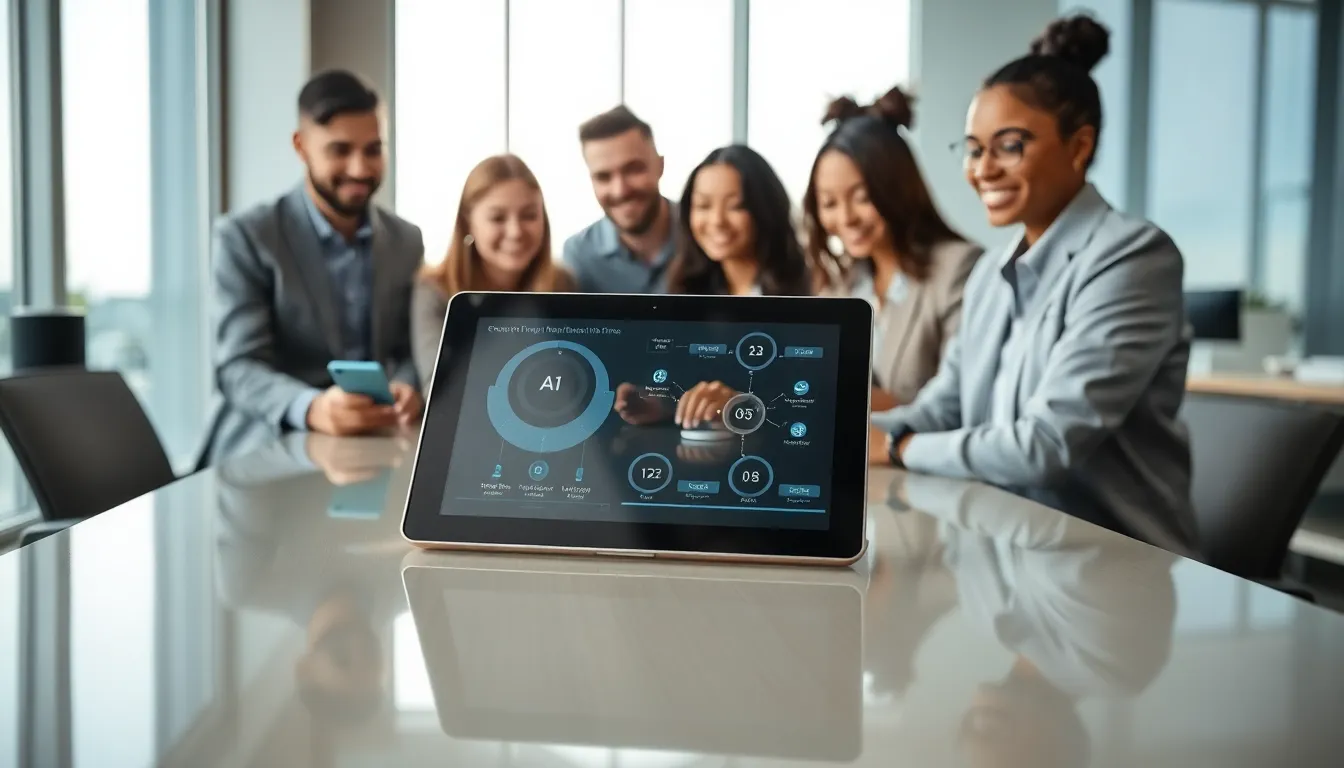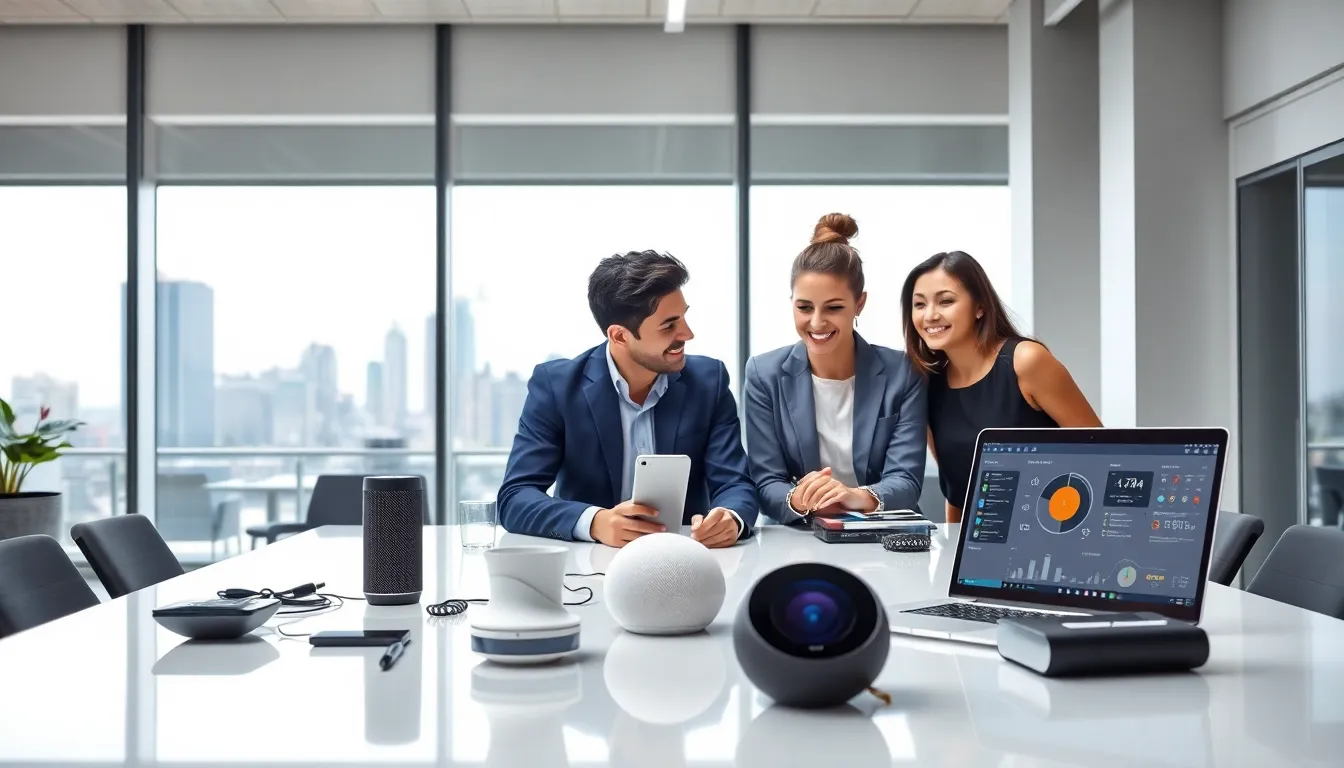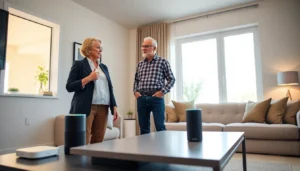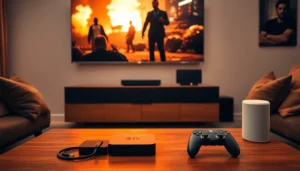High tech devices are revolutionizing the way people live, work, and play. Gone are the days when devices merely served a purpose: today, they engage us, enhance our productivity, and even make our morning coffees. Imagine a world where your refrigerator tells you when you’re low on milk, your phone knows your schedule better than you do, and your car drives itself. Intrigued? Well, buckle up, because this article will take you on a fantastic journey through the world of high tech devices.
Table of Contents
ToggleAn Overview of High Tech Devices

High tech devices encompass a wide range of technology-driven products that leverage advanced science and engineering to enhance user experience. From smartphones to drones, these devices employ cutting-edge features and functionalities that not only simplify tasks but also transform the way humans interact with technology. The essence of high tech devices lies in their ability to connect seamlessly with users, offering solutions tailored to their specific needs and preferences.
In recent years, developments in AI, machine learning, and the Internet of Things (IoT) have accelerated the proliferation of high tech devices. This surge can be seen not only in consumer electronics but also in sectors like healthcare, automotive, and smart homes. Society is witnessing a technological renaissance, where yesterday’s science fiction ideas are today’s reality.
Impact of High Tech Devices on Daily Life
High tech devices undoubtedly reshape daily life, influencing how individuals manage tasks, communicate, and even entertain themselves. Today, a person can control household appliances remotely using a smartphone app, making mundane chores feel less burdensome. Think about how labor-intensive tasks like grocery shopping and bill payments have shifted to a few taps on a screen.
Social interactions have also evolved. Through high tech devices, virtual communication has soared, shrinking distances between friends and family. Video calls can make it seem like loved ones are right there with you, no matter where they are in the world. But, while these advancements have made life more convenient, they also raise questions about dependency and the quality of personal interactions.
Categories of High Tech Devices
The landscape of high tech devices is diverse, each category serving unique functions and audiences. Here are some prominent categories:
- Smartphones: The ultimate multifunctional device that combines the capabilities of a computer with communication and entertainment.
- Wearables: Devices like smartwatches and fitness trackers offer health monitoring and connectivity, letting users stay on top of their fitness and personal interactions.
- Home Automation Devices: Smart speakers, thermostats, and even smart lightbulbs fall within this category, providing enhanced control over home environments.
- Drones: Used for everything from aerial photography to package delivery, drones represent a burgeoning industry driven by innovation.
- Virtual Reality (VR) and Augmented Reality (AR): These devices immerse users in new environments, blending the digital world with the real one, particularly in gaming and education.
Emerging Technologies in High Tech Devices
Emerging technologies are the lifeblood of high tech devices, continuously pushing boundaries and enhancing functionality. For instance, artificial intelligence (AI) is increasingly present in everyday gadgets. Devices can learn user preferences, leading to predictions that tailor experiences more closely to individual needs.
Also, advancements in machine learning enhance security features, such as facial recognition and biometric authentication, turning once simple devices into secure digital vaults. The rise of 5G technology promises lightning-fast internet speeds, enabling more consistent connections for devices across the globe, so enhancing user experience in ways previously considered impossible.
Challenges and Considerations
Even though the benefits, high tech devices also present several challenges that users and developers should address. Privacy concerns loom large as devices gather vast amounts of data for functionality. Users may unknowingly trade their personal information for convenience, raising ethical questions about data ownership.
Cybersecurity threats are another pressing issue, with hackers finding increasingly sophisticated methods to breach systems. As devices become more interconnected, the risks associated with each connection increase, creating vulnerabilities that require robust security protocols. Education around responsible usage and security practices is crucial to mitigate these risks.
Future Trends in High Tech Devices
Looking ahead, several trends are likely to shape the future of high tech devices. Expect to see greater integration of AI across various platforms, making devices not just smarter, but more intuitive in understanding and predicting user needs. This evolution includes enhancements in natural language processing, allowing for more fluid conversations between humans and machines.
Sustainability is becoming a major focus as consumers demand eco-friendlier products. Companies are responding with devices that not only perform flawlessly but are also built from recyclable materials and designed to minimize energy consumption.
Also, customization will gain importance. Devices increasingly enable users to tailor features according to their preferences, making every interaction uniquely suited to individual lifestyles.



